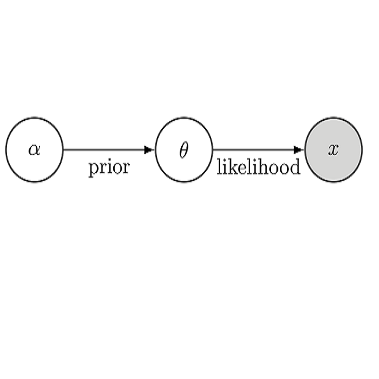Multiway data often naturally occurs in a tensorial format which can be approximately represented by a low-rank tensor decomposition. This is useful because complexity can be significantly reduced and the treatment of large-scale data sets can be facilitated. In this paper, we find a low-rank representation for a given tensor by solving a Bayesian inference problem. This is achieved by dividing the overall inference problem into sub-problems where we sequentially infer the posterior distribution of one tensor decomposition component at a time. This leads to a probabilistic interpretation of the well-known iterative algorithm alternating linear scheme (ALS). In this way, the consideration of measurement noise is enabled, as well as the incorporation of application-specific prior knowledge and the uncertainty quantification of the low-rank tensor estimate. To compute the low-rank tensor estimate from the posterior distributions of the tensor decomposition components, we present an algorithm that performs the unscented transform in tensor train format.
翻译:多路数据通常自然地以压力形式出现,这种形式大致上可以代表低声拉分分解元件。 这样做有用, 因为复杂性可以大大降低, 大型数据集的处理可以方便。 在本文中, 通过解决巴伊西亚推论问题, 我们发现给定分数代表的级别较低。 通过将总体推论问题分解为次问题, 我们按次问题顺序推导出一个阵列分解元件的后部分布。 这导致对众所周知的迭代算法交替线性( ALS) 方案进行概率化解释。 这样, 就可以考虑测量噪音, 并纳入特定应用的先前知识和低声拉估计的不确定性量化。 要将低调高压估计值从高压分解分解元件的后部分布中进行计算, 我们提出一种算法, 以推力列列列车格式进行不中偏变。



